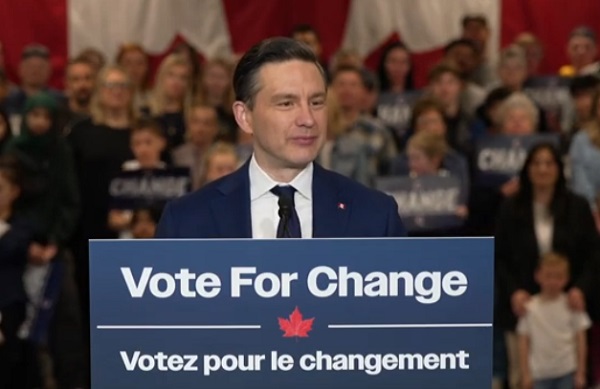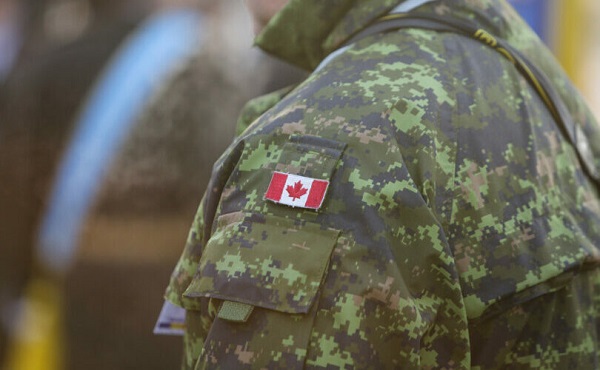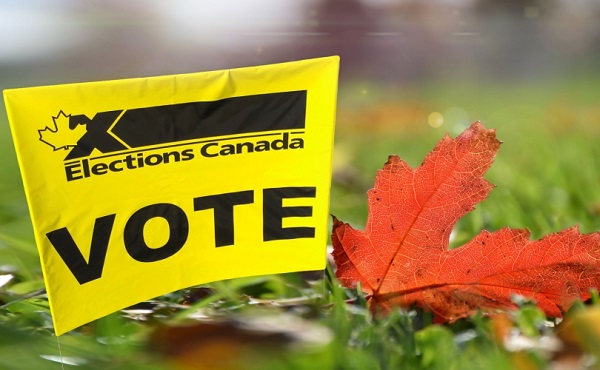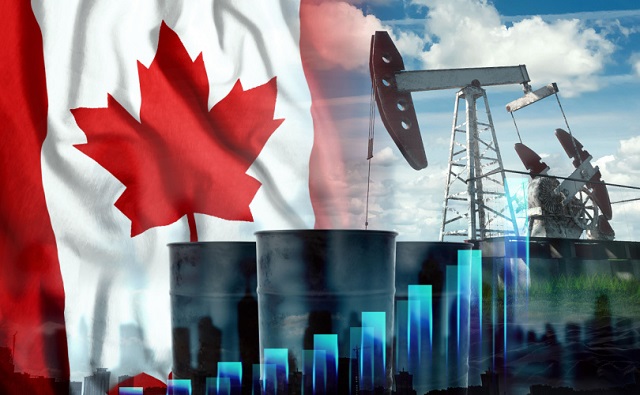Alberta
MGM, HBO, CBS, Paramount and other studios all working in Alberta right now!

Film credit attracts productions worth nearly $1B
A key part of Alberta’s Recovery Plan, the Film and Television Tax Credit is attracting major productions to the province, diversifying the economy and creating thousands of new jobs.
Since the program’s launch in January 2020, it has attracted 50 productions to Alberta with total production costs of $955 million, creating 9,000 new direct and indirect jobs in the province.
In March 2021, Alberta’s government removed the $10-million per-project cap from the Film and Television Tax Credit to make the province an even more desirable location for larger productions.
Cameras are rolling on film and television productions across Alberta, injecting hundreds of millions of dollars in investment into the economy as these productions hire local crews, actors and extras, and use local businesses.
The Film and Television Tax Credit, combined with Alberta’s competitive tax environment, affordable labour costs and breathtaking scenery, has made the province a prime choice for medium and big-budget television and film projects that have a positive impact on Alberta’s economy.
HBO is currently filming its new television series The Last of Us in Alberta. The project is the single largest television series production in Canadian history and is expected to create thousands of jobs.
“The boom in our film industry is the perfect example of Alberta’s Recovery Plan in action. Thanks to the Film and Television Tax Credit, and our recent improvements to it, we are witnessing a new billion-dollar industry take shape right before our eyes, further diversifying the economy and creating new jobs.”
Jason Kenney, Premier
“Alberta is the new Hollywood. With our stunning landscapes, our immense talent and our world-class studios, our province is being showcased on the big screen in a way that it never has before, with thousands of jobs being created in everything from carpentry to catering.”
Doug Schweitzer, Minister of Jobs, Economy and Innovation
“Film productions like The Last of Us and Ghostbusters mean thousands of new jobs for rural Albertans both on and off set. With landscapes from the Rocky Mountains to the Prairies, Alberta is becoming a global hub for film. New multimillion-dollar investments in the film industry are getting Albertans back to work and driving Alberta’s economic recovery. I look forward to seeing even more of Alberta on the big screen.”
Nate Horner, Associate Minister of Rural Economic Development
“From breathtaking landscapes to a skilled and growing workforce, Alberta has much to offer the global production community. The province’s enhanced film and television production incentive has also made it an especially attractive destination for HBO. We look forward to filming The Last of Us here, and to working with talented Alberta crews.”
Jay Roewe, senior vice-president, Production & Incentives, HBO
“Alberta’s Film and Television Tax Credit is a game-changer in terms of production volumes. It has created thousands of well-paying jobs and numerous business opportunities. High-profile projects such as The Last of Us are a major driver of jobs, Alberta businesses and training. Projects like this benefit numerous industries ranging from fabric suppliers to companies in the hospitality industry. Alberta’s spectacular landscapes are being shared globally, elevating our economic standing in the global marketplace.”
Damian Petti, president, IATSE Local 212
“We are pleased to see the Alberta government is supporting Alberta’s creative industries by their recent enhancements of our film and television tax credits and production incentives. From actors to puppeteers to stunt performers, this is fantastic news for ACTRA Alberta performers, our production community and Alberta’s economy.”
Tina Alford, branch representative, ACTRA Alberta
“Alberta’s enhanced incentive program and strong commitment to increasing investment from global studios is working to grow the creative economy and provide unparalleled opportunities for Alberta’s creative talent. On behalf of the major studios we represent, we’re thrilled that the Alberta government and industry have worked together to create jobs for thousands of skilled Albertans in front of and behind the camera, and to showcase the beauty and talent of Alberta on the global stage.”
Wendy Noss, president, MPA-Canada
“HBO is synonymous with quality and The Last of Us has long been touted as one of the most cinematic video game series ever created – a perfect marriage to Alberta’s cinematic landscapes, light and picturesque communities. We are grateful to have this tentpole series in the province developing the industry and creating hundreds of jobs for our hard-working and talented crews, as well as a great economic stimulus in communities of southern Alberta. This project, along with enhancements of the Alberta Film and Television Tax Credit, will be looked back on as cornerstone moments in a booming film production sector for years to come.”
Brock Skretting, head of advocacy, Keep Alberta Rolling
“The changes to Alberta’s Film and Television Tax credit can only be seen as a success story. Not only are we creating good high-paying jobs for Albertans, but it is also an important step in boosting Alberta’s economy at time when we need it. No matter what the business is – gas stations, lumberyard, coffee shop – movie money is being spent in Alberta.”
Mike Dunphy, business agent, Teamsters Local 362
Quick facts
- Alberta’s Film and Television Tax Credit, launched in January 2020, offers a refundable Alberta tax credit certificate on eligible Alberta production and labour costs to corporations that produce films, television series and other eligible screen-based productions in the province.
- The Film and Television Tax Credit complements the Alberta Made Production Grant, and is part of the government’s commitment to grow Alberta’s cultural industries by 25 per cent over the next decade.
- In 2019, combined consumer spend globally for theatrical and home entertainment reached $101 billion, a 34 per cent increase since 2015.
- The film and television industry is experiencing significant growth nationally and globally.
- Global spending in the industry is projected to reach about $113 billion by 2022.
- It is expected more than $50 billion of that spending will be in North America.
- Last year, the Canadian film and television industry was valued at $3 billion and employed more than 54,000 workers.
- Every year, Alberta graduates more than 3,000 creative industry professionals from its post-secondary institutions.
- According to industry estimates, more than 3,200 Albertans are employed in the province’s motion picture and video industry.
- According to Statistics Canada data:
- Every $1 million of production activity in the screen-based production sector creates about 13 Alberta jobs.
- Every $1 million of government investment under the Film and Television Tax Credit program is expected to support about 85 Alberta jobs.
- The budget for the Film and Television Tax Credit in 2021-22 is $50 million.
Related information
Alberta
Low oil prices could have big consequences for Alberta’s finances

From the Fraser Institute
By Tegan Hill
Amid the tariff war, the price of West Texas Intermediate oil—a common benchmark—recently dropped below US$60 per barrel. Given every $1 drop in oil prices is an estimated $750 million hit to provincial revenues, if oil prices remain low for long, there could be big implications for Alberta’s budget.
The Smith government already projects a $5.2 billion budget deficit in 2025/26 with continued deficits over the following two years. This year’s deficit is based on oil prices averaging US$68.00 per barrel. While the budget does include a $4 billion “contingency” for unforeseen events, given the economic and fiscal impact of Trump’s tariffs, it could quickly be eaten up.
Budget deficits come with costs for Albertans, who will already pay a projected $600 each in provincial government debt interest in 2025/26. That’s money that could have gone towards health care and education, or even tax relief.
Unfortunately, this is all part of the resource revenue rollercoaster that’s are all too familiar to Albertans.
Resource revenue (including oil and gas royalties) is inherently volatile. In the last 10 years alone, it has been as high as $25.2 billion in 2022/23 and as low as $2.8 billion in 2015/16. The provincial government typically enjoys budget surpluses—and increases government spending—when oil prices and resource revenue is relatively high, but is thrown into deficits when resource revenues inevitably fall.
Fortunately, the Smith government can mitigate this volatility.
The key is limiting the level of resource revenue included in the budget to a set stable amount. Any resource revenue above that stable amount is automatically saved in a rainy-day fund to be withdrawn to maintain that stable amount in the budget during years of relatively low resource revenue. The logic is simple: save during the good times so you can weather the storm during bad times.
Indeed, if the Smith government had created a rainy-day account in 2023, for example, it could have already built up a sizeable fund to help stabilize the budget when resource revenue declines. While the Smith government has deposited some money in the Heritage Fund in recent years, it has not created a dedicated rainy-day account or introduced a similar mechanism to help stabilize provincial finances.
Limiting the amount of resource revenue in the budget, particularly during times of relatively high resource revenue, also tempers demand for higher spending, which is only fiscally sustainable with permanently high resource revenues. In other words, if the government creates a rainy-day account, spending would become more closely align with stable ongoing levels of revenue.
And it’s not too late. To end the boom-bust cycle and finally help stabilize provincial finances, the Smith government should create a rainy-day account.
Alberta
Governments in Alberta should spur homebuilding amid population explosion

From the Fraser Institute
By Tegan Hill and Austin Thompson
In 2024, construction started on 47,827 housing units—the most since 48,336 units in 2007 when population growth was less than half of what it was in 2024.
Alberta has long been viewed as an oasis in Canada’s overheated housing market—a refuge for Canadians priced out of high-cost centres such as Vancouver and Toronto. But the oasis is starting to dry up. House prices and rents in the province have spiked by about one-third since the start of the pandemic. According to a recent Maru poll, more than 70 per cent of Calgarians and Edmontonians doubt they will ever be able to afford a home in their city. Which raises the question: how much longer can this go on?
Alberta’s housing affordability problem reflects a simple reality—not enough homes have been built to accommodate the province’s growing population. The result? More Albertans competing for the same homes and rental units, pushing prices higher.
Population growth has always been volatile in Alberta, but the recent surge, fuelled by record levels of immigration, is unprecedented. Alberta has set new population growth records every year since 2022, culminating in the largest-ever increase of 186,704 new residents in 2024—nearly 70 per cent more than the largest pre-pandemic increase in 2013.
Homebuilding has increased, but not enough to keep pace with the rise in population. In 2024, construction started on 47,827 housing units—the most since 48,336 units in 2007 when population growth was less than half of what it was in 2024.
Moreover, from 1972 to 2019, Alberta added 2.1 new residents (on average) for every housing unit started compared to 3.9 new residents for every housing unit started in 2024. Put differently, today nearly twice as many new residents are potentially competing for each new home compared to historical norms.
While Alberta attracts more Canadians from other provinces than any other province, federal immigration and residency policies drive Alberta’s population growth. So while the provincial government has little control over its population growth, provincial and municipal governments can affect the pace of homebuilding.
For example, recent provincial amendments to the city charters in Calgary and Edmonton have helped standardize building codes, which should minimize cost and complexity for builders who operate across different jurisdictions. Municipal zoning reforms in Calgary, Edmonton and Red Deer have made it easier to build higher-density housing, and Lethbridge and Medicine Hat may soon follow suit. These changes should make it easier and faster to build homes, helping Alberta maintain some of the least restrictive building rules and quickest approval timelines in Canada.
There is, however, room for improvement. Policymakers at both the provincial and municipal level should streamline rules for building, reduce regulatory uncertainty and development costs, and shorten timelines for permit approvals. Calgary, for instance, imposes fees on developers to fund a wide array of public infrastructure—including roads, sewers, libraries, even buses—while Edmonton currently only imposes fees to fund the construction of new firehalls.
It’s difficult to say how long Alberta’s housing affordability woes will endure, but the situation is unlikely to improve unless homebuilding increases, spurred by government policies that facilitate more development.
-

 Automotive2 days ago
Automotive2 days agoHyundai moves SUV production to U.S.
-

 2025 Federal Election2 days ago
2025 Federal Election2 days agoAs PM Poilievre would cancel summer holidays for MP’s so Ottawa can finally get back to work
-

 armed forces1 day ago
armed forces1 day agoYet another struggling soldier says Veteran Affairs Canada offered him euthanasia
-

 2025 Federal Election2 days ago
2025 Federal Election2 days agoPoilievre Campaigning To Build A Canadian Economic Fortress
-

 Opinion9 hours ago
Opinion9 hours agoCanadians Must Turn Out in Historic Numbers—Following Taiwan’s Example to Defeat PRC Election Interference
-

 International17 hours ago
International17 hours agoHistory in the making? Trump, Zelensky hold meeting about Ukraine war in Vatican ahead of Francis’ funeral
-

 2025 Federal Election2 days ago
2025 Federal Election2 days agoThe Cost of Underselling Canadian Oil and Gas to the USA
-

 Automotive2 days ago
Automotive2 days agoCanadians’ Interest in Buying an EV Falls for Third Year in a Row





